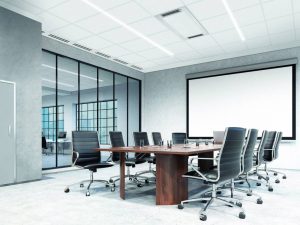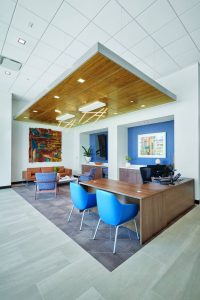
By Anne P. Jennings, PE
Although the risk of contracting COVID-19 has fallen, especially for the fully vaccinated, it has not disappeared entirely. The pandemic has spurred heightened awareness of how to stay healthy indoors, with many employees nervous about returning to their workplaces.
A critical part of re-entry is assuring employers are providing a safe, healthy environment with improved indoor air quality. To this end, employers need to take precautions and comply with guidelines to minimize exposure to not only COVID-19, but also the airborne transmission of other viruses and germs long present in indoor environments.
Science has learned much about the spread of viruses over the past year, and there are some clear evidence-based steps to be taken to protect workers. Since COVID-19 and other pathogens are spread via tiny airborne droplets, one such step is an upgrade to the ventilation and filtration systems before bringing workers back. It is important for employers to make decisions now to benefit the safety and health of workspaces into the future.
To combat the potential spread of viruses like COVID-19 and other airborne pathogens, safeguards need to be increased for the long-term to meet occupants’ ongoing needs for indoor health and a sense of well-being.
Today’s office environment
With a better understanding of today’s workplace, the challenges facing a return are clear. Research from the World Health Organization (WHO) suggests heavily populated environments with poor or insufficient air flow raise infection rates. The research also encourages good ventilation in all closed settings. It also notes outbreaks of COVID-19 in workplaces by aerosol transmission cannot be ruled out “where there are crowded and inadequately ventilated spaces where infected persons spend long periods of time with others.”
Similarly, the U.S. Centers for Disease Control and Prevention (CDC) updated its “Guidance for Businesses and Employers Responding to Coronavirus Disease,” suggesting employers seeking
to resume normal or phased business operations improve the building’s ventilation system.
In addition to wearing masks, hand washing, and cleaning of surfaces, the CDC recommends “considering taking steps to improved ventilation” in buildings such as offices.

HVAC recommendations
In providing guidance on healthy workplace procedures for the return to offices, the CDC cites HVAC airflow recommendations from the American Society of Heating, Refrigerating and Air-Conditioning Engineers (ASHRAE). In its “Position Document on Infectious Aerosols,” ASHRAE states while ventilation systems cannot address all aspects of infectious control, “changes to building operations, including the operation of heating, ventilating, and air-conditioning systems, can reduce airborne exposures.”
The document lists several recommendations employers should consider to reduce occupant exposure to infectious aerosols. Among them are strategies to improve ventilation through dilution, airflow patterns, filtration, and pressurization.
Ceiling solutions
One solution to these issues is the installation of an upgraded HVAC system. A less costly, easier to install, and potentially more effective solution is utilizing suspended ceiling technologies in combination with improved filtration. Below are three ceiling solutions available today to provide a step in limiting the transmission of airborne pathogens.
Cleanability
Cleaning and disinfecting desks, keyboards, door handles, countertops, and other office surfaces is essential to providing a safe, healthy space. But what about ceilings, which can comprise 20 percent or more of total office surfaces?
While heavy contaminants may fall, aerosols can rise and cling to ceilings. Today, many smooth-textured acoustical ceiling panels can be cleaned and disinfected based on CDC recommendations by either wiping, spraying, or using a fogger to eliminate pathogens. Many are also bacteria, mold, and mildew resistant for extra protection.




